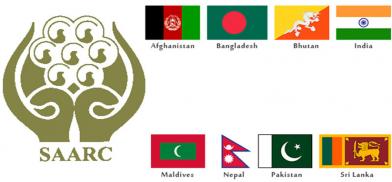South Asia: Economic reality and policy options
Global recession has amplified domestic economic challenges and caused output contraction in 2020, with economies that rely heavily on tourism and travel particularly hard hit are Maldives, Nepal, and Sri Lanka, writes Partha Pratim Mitra for South Asia Monitor

The 7.7 percent fall in regional GDP forecast for 2020 by the World Bank in early October 2020 would be by far the largest decline expected for South Asia. Unlike in the earlier recessions where investment and exports led the downturn, the pandemic induced downturn has been in the nature of consumption demand that has been artificially repressed due to sudden loss of incomes.
The sharp decline in consumption is expected to result in an increase in poverty than what the forecast number for GDP suggests. The extreme poverty rates globally are expected to rise for the first time in over 23 years and more people are likely to be added to the ranks of the extreme poor in South Asia than in any other region in 2020.
The main source of risk to the GDP forecast originates from lack of financing the fiscal stimulus that has been ushered in countries of the region. Simulations suggest that a sudden stop in external finance due to an increase in risk aversion by foreign investors could sharply reduce governments’ ability to spend the money required to stimulate the economy in some countries, leading to a large fall in output on top of the decline induced by the pandemic.
Impact of COVID-19
Most analysts contend that the large informal sectors in South Asia magnify the impact of COVID-19. In addition, there is a strong sense that the current crisis will increase the size of the informal economy and call for more investment to expand the digital infrastructure.
The World Bank had cautioned that the pandemic has had a devastating impact on South Asia Region (SAR), leading to an estimated 6.7 percent output contraction in 2020. The region is projected to grow by 3.3 percent in 2021 and 3.8 percent in 2022, which is substantially lower than during the ten-year period before the onset of the pandemic. COVID-19 is expected to create a long-term damage on growth prospects by depressing investment, eroding human capital, undermining productivity, and depleting policy options for revival.
The outlook is still very uncertain and subject to multiple difficulties including the revival of investment. In the region excluding India, the economic impact of COVID-19 has been somewhat less severe but still significant. The global recession has amplified domestic economic challenges and caused output contraction in 2020, with economies that rely heavily on tourism and travel particularly hard hit are Maldives, Nepal, and Sri Lanka.
As the pandemic suppressed both domestic activities and caused a contraction, the region will register the largest average primary budget deficit in more than three decades. Rising food prices in some parts of the region and a large decline in basic incomes prompted governments to implement policies to mitigate food insecurity and support the agriculture sector in most economies.
Monetary policy in the region responded to preserve financial stability, focusing on ensuring adequate liquidity provision.
Shock on global working hours
Globally the labour market disruption in 2020 far exceeded the impact of the global financial crisis of 2009. Over the 15 years before the onset of the COVID-19 pandemic, the average hours worked per person of working age (aged 15 to 64) fluctuated between 27 and 28 hours per week. The average weekly working hours dropped sharply from 27.2 hours per week in 2019 to 24.7 hours per week in 2020. In sharp contrast when the global financial crisis hit the labour market, average working hours declined by just 0.6 hours between 2008 and 2009.
The effect of the COVID-19 shock on global working hours has therefore been approximately four times higher than that of the global financial crisis. In Asia and the Pacific, the annual estimated decline in working hours is 7.9 per cent. Asia presents a very heterogeneous picture of work hour losses, with East Asia at 4.2 percent, South-East Asia and the Pacific at 8.2 percent, and South Asia at 12.7 percent which has been by far the highest in the region.
During the present pandemic many governments have as compared to the 2008-10 period when the global financial crisis took place taken unprecedented action to counteract the economic and labour market impact, including through temporary wage subsidies, extending social protection, and providing support to keep businesses afloat. Central banks across the world have intervened with expansionary monetary policies to stimulate economies.
Despite these measures, the economic and employment consequences of the COVID-19 crisis are likely to exert further downward pressure on wages in the near future due to lack of investment demand that could generate employment opportunities. Hence, if economies are to return to a path of sustained and balanced economic growth, wage policies will need to take into account the need both for incomes and aggregate demand to be supported and for enterprises to remain successful and sustainable.
Minimum wage regulations
Globally, International Labour Organization (ILO) estimates show that an estimated 327 million wage earners are paid at or below the applicable hourly minimum wage. This figure represents 19 percent of all wage earners and includes 152 million women. Out of the estimated 327 million wage earners who are paid at or below the minimum wage, 266 million wage earners around the world earn less than existing hourly minimum wages, either because they are not legally covered under minimum wage legislation or because of non-compliance. The groups most frequently excluded from legal coverage of minimum wage systems are agricultural workers and domestic workers.
The ILO wage report 2002-21 report shows that, as of 2020, an estimated 18 percent of countries with statutory minimum wages exclude either agricultural workers, domestic workers, or both from minimum wage regulations. One of the most significant indicators of non-compliance is a high incidence of informality, which poses a major challenge for the rights of workers generally, including for the enforcement of minimum wages. In countries with high levels of informality, if minimum wages are to be effective, they need to be accompanied by measures to encourage formalization. Other measures include targeted labour inspections, awareness-raising campaigns, as well as efforts to raise productivity. Indeed, low productivity is one of the drivers of informality and has repercussions for the level of non-compliance with minimum wage legislation.
In terms of regional differences, the proportion of workers earning less than the minimum wages, the region with the largest absolute number of people in this situation in Asia and the Pacific, where an estimated 134 million wage earners. Among economies in Asia and the Pacific for which data are available, 60.7 percent of all wage employees are informal workers; of these, 16.5 percent earn at or below the minimum wage. The South Asia region forms part of the Asia and Pacific region and this region if considered separately has a much larger proportion of the workforce in the informal sector.
An important supply-side policy option widely considered to revive global supply chains is e-commerce. In 2017, a total of US$2.3 trillion was spent globally by retail consumers, almost 25 percent more than in 2016. Evidence indicates that trade in goods within South Asia is one-third of its potential, and trade among Bangladesh, India, and Pakistan, in particular, has been estimated to be well below its potential. A survey of over 2,200 firms in South Asia showed that the top concerns on cross-border e-commerce sales included e-commerce related logistics, e-commerce, and digital regulations, and connectivity and information technology infrastructure. These barriers are significantly higher when trading with other South Asian countries.
Small and medium enterprises in the region reported that removing regulatory and logistical challenges to e-commerce would increase their exports, employment, and productivity by as much as 20–30 percent.
While e-commerce is one very important measure to an economic revival, and the ground realities need better appreciation. Problems of informality including the smaller size of enterprises in the informal sector, access to finance, digital technology, and innovation are important supply-side constraints for investment revival.
Non-receipt of minimum wages by many sections of the workforce in the region acts as demand-side constraints in the economic revival of the region. At the same time investment would need to be stepped up to activate supply chains both national and regional.
The process of demand revival and easing supply constraints would create employment opportunities to generate the necessary effective demand to revive economies of the region.
(The writer is a retired Indian Economic Service officer who worked in the labour ministry. The views expressed are personal. He can be contacted at ppmitra56@gmail.com)
References:
“World Bank. 2020. South Asia Economic Focus, Fall 2020 : Beaten or Broken? Informality and COVID-19. Washington, DC: World Bank. © World Bank. https://openknowledge.worldbank.org/handle/10986/34517 License: CC BY 3.0 IGO. October p30-31.
JANUARY 2021 Global Economic Prospects© 2021 International Bank for Reconstruction and Development / The World Bankfile:///C:/Users/HP/Downloads/9781464816123%20(1).pdfp 93-94
ILO Monitor: COVID-19 and the world of work. Seventh edition25 January 2021 https://www.ilo.org/wcmsp5/groups/public/---dgreports/---dcomm/documents/briefingnote/wcms_767028.pdf
Guy Ryder, Wages and minimum wages in the time of COVID-19Global Wage Report 2020–21,Dec 2020.p3-4
Wages and minimum wages in the time of COVID-19Global Wage Report 2020–21, Dec 2020. https://www.ilo.org/wcmsp5/groups/public/---dgreports/---p 1-10 ,dcomm/documents/publication/wcms_762302.pdf
Global Wage Report 2002-21,opcit p90
Ibid p152
Kathuria S et al Unleashing E-Commerce for South Asian Integrationhttps://openknowledge.worldbank.org/bitstream/handle/10986/32718/9781464815195.pdfp9-10










Post a Comment